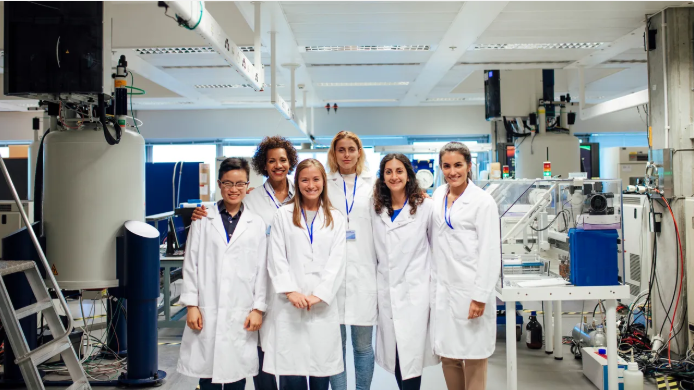Syllabus:
GS1: Role of Women and Women’s Organizations GS2: Welfare Schemes for Vulnerable Sections of the population by the Centre and States and the Performance of these Schemes; Mechanisms, Laws, Institutions and Bodies constituted for the Protection and Betterment of these Vulnerable Sections.
Context:
Every year on July 15, 2025, as we observe World Youth Skills Day, we are reminded thatskills development is fundamental to reducing unemployment and promoting decent work but it also helps in reminding that industry is losing out by not investing in STEM careers for India’s women.
More on the News
- India leads globally with 43% of STEM graduates being women, yet only 27% are in the STEM workforce.
- According to the Periodic Labour Force Survey (PLFS) 2023-24, India’s overall female labour force participation rate (FLFPR) has risen to 41.7%.
- However, the increase is sharper for rural women (47.6%) than in urban areas (25.4%), reflecting barriers in formal employment, workplace safety, and societal expectations.
- According to the UNESCO Institute for Statistics (2021), only 31.5% of researchers worldwide are women.
- According to estimates by the McKinsey Global Institute, enabling 68 million more women to participate in India’s workforce could boost India’s GDP by up to $700 billion by 2025.
- Similarly, the World Bank suggests that achieving a 50% female workforce participation rate could elevate GDP growth by 1%.
Reasons for the low participation of women
- Persistent social norms, such as the belief that mechanical means masculine or that coding isn’t for girls, continue to create invisible barriers for skilled women entering technical fields.
- World Bank and UNESCO highlight how gendered perceptions limit women’s participation in STEM and technical trades.
- Evidence shows that women do leave STEM fields because workplaces are often unwelcoming, families lack awareness of career opportunities, and roles remain deeply gendered.
Government Effort
- The New Education Policy (NEP) 2020 paved the way for higher retention and opportunities in the fields of STEM. The nodal Ministry of Education (MoE) has integrated education with skills development and life skills training.
- The Government’s push to upgrade ITIs and expand vocational training is making quality technical education more accessible to rural youth, bringing opportunities closer to villages and small towns.
International Effort
- UN Women’s WeSTEM programme, in partnership with Madhya Pradesh, Gujarat, and Micron Foundation, equips women with STEM skills while addressing mindset barriers through community engagement, safety sessions, and role models.
- The share of the gender budget in the total national Budget has increased from 6.8% in 2024-25 to 8.8% in 2025-26, with ₹4.49 lakh crore in allocation toward gender-specific programmes.
- The Prime Minister’s vision of Viksit Bharat places women at the heart of India’s development journey. Women’s economic mobility is seen as essential for driving inclusive and sustainable growth.
- The Union Budget 2025-26 introduced term loans for women entrepreneurs, new National Skill Training Institutes, and investments in technology-driven skilling.
- India’s policy framework reflects a strong commitment to inclusive growth and gender empowerment.
- Initiatives like Skill India and Digital India aim to equip youth, especially women, with future-ready skills and digital access.
- Schemes such as Beti Bachao, Beti Padhao promote girls’ education and empowerment, while PM Vishwakarma Yojana supports traditional artisans, including women, with skill upgradation and financial support.
Way Forward
- Addressing these perceptions, alongside ensuring workplace safety, equitable pay, and support for career transitions related to marriage, childbirth, and caregiving, is key to unlocking the full potential of the workforce.
- Industry partnerships with educational institutions, mentorship networks linking professionals with students, and workplace policies that accommodate life transitions and ensure safety can bridge the education-employment gap.


